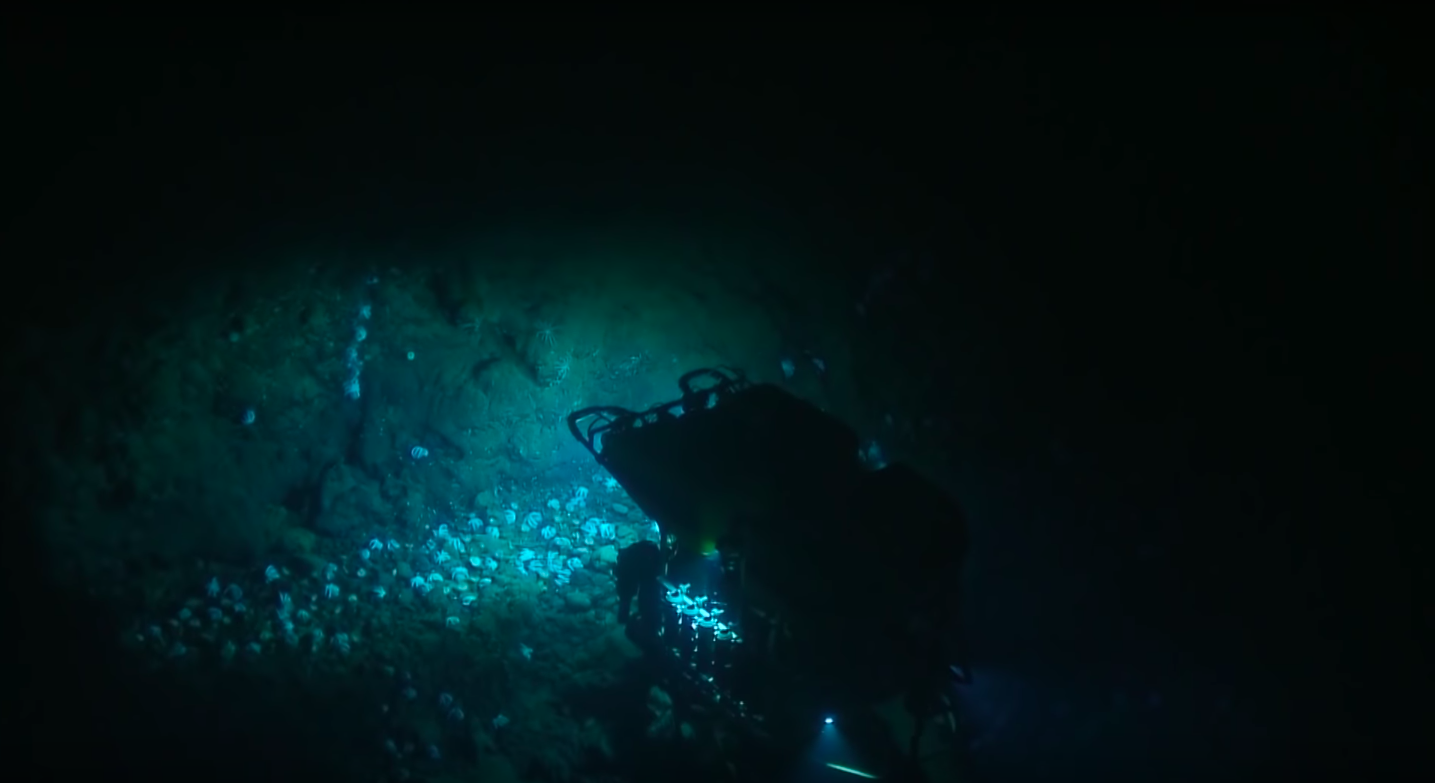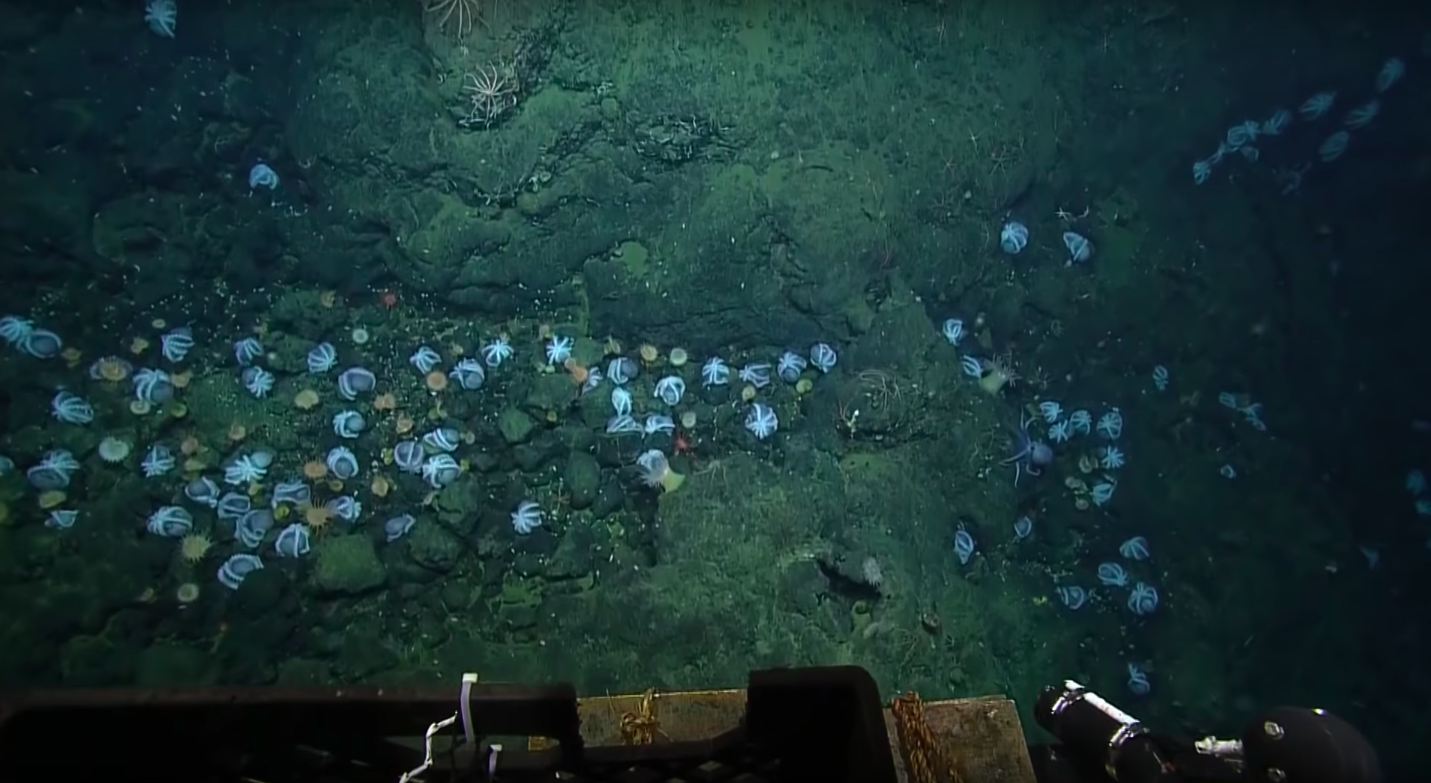Scientists exploring waters near Monterey, California spied more than 1,000 octopuses at the bottom of the ocean—the largest octopus nursery ever discovered, according to National Geographic.
The incredible footage was captured last week by the Nautilus exploration vessel, which is probing the largely uncharted seafloor of Davidson Seamount, an undersea mountain habitat roughly 80 miles southwest of Monterey.
Videos by VICE
“We went down the eastern flank of this small hill, and that’s when—boom—we just started seeing pockets of dozens here, dozens there, dozens everywhere,” Chad King, the expedition’s chief scientist, told National Geographic on Monday.

Few have witnessed such a sight. The footage was shot 10,000 feet beneath the ocean’s surface, and shows hundreds of Muusoctopus robustus, small and inkless deep-sea octopuses, in brooding positions: in near-total darkness with their arms inverted, incubating eggs that were cemented to rocks on the seafloor.
Most were females, and “almost 99 percent were brooding,” King said.
The team also spotted developing embryos within the egg cases.

Scientists had never documented a Muusoctopus cluster on the West Coast before, reported KQED on Friday. The team’s footage marks the second time a Muusoctopus nursery has been seen—the first being a group of 100 spotted near Costa Rica in April, though no embryos were recorded at that time.
“I’ve never in my career come across something like this, where these could potentially be nursery habitats, and another extremely important reason why we need to protect this area,” King told San Francisco media outlet KQED.
Around the cluster, a strange “oasis” of shimmering water possibly indicating warm water made King wonder if the females had sought higher temperatures. Other factors, such as more oxygenated water or certain mineral concentrations, may have also influenced their decision to lay eggs there. (There have been anecdotal reports of the octopuses climbing up fishing ropes, perhaps to escape low oxygen waters.)
King said a technical malfunction with their submersible is preventing them from revisiting the nursery.
Davidson Seamount, known as “an oasis in the deep,” is home to diverse marine life, such as corals, sponges, deep-sea fishes, and shrimp. It was granted federal protection as part of Monterey Bay National Marine Sanctuary, and is one of the largest known seamounts in US waters.
More
From VICE
-

Photo by Sean Gallup/Getty Images -

Westend61/Getty Images -

Simone Joyner/Getty Images -

Youth Code
